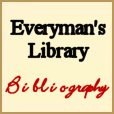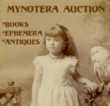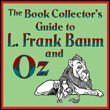|
|
|


<<< Continued from previous page
Every time I visited a bookseller or went to a book fair, I asked if the bookseller had a print catalogue. I took these catalogues home and read them for homework. I read catalogues that described Beat poetry, Western Americana, books written by and about women, books about cattle ranching, books of import to the Mormon faith, early incunabula, manuscript items, and the illustrations of N.C. Wyeth. I learned a lot about each subject just reading the descriptions of the books for sale. Many booksellers choose their finest books in a particular subject, and in a detailed catalogue description, their knowledge and command of that subject shines.
Another important decision a bookseller producing a catalogue must make is whether the books will be a diverse group of fine books
in many subjects or a thematic collection focused on a particular author, illustrator, binder, or period in history. Since I
already had a small collection of books by Dante Alighieri, I decided that my first catalogue would focus on illustrated and
unusual editions of works by this author. I had studied Dante for a year in college, and I had taught his Divine Comedy to high school students, so I felt fairly confident in my knowledge of the author and his works.
I wrote a draft of a catalogue describing the 25 books that made up the core collection and brought it with me to last year's
Colorado Antiquarian Book Seminar where the faculty and some of my fellow seminarians read it and offered a critique and suggestions for revision. As this catalogue is my first, this experience was invaluable. If you are working on your first catalogue and you can't attend the Colorado Antiquarian Book Seminar, I suggest befriending a bookseller who issues catalogues regularly and asking him or her to critique your draft catalogue.
After returning from Colorado, I set out to add another two-dozen books to my catalogue, bringing the total to 50 books. Determining which books to add and gradually acquiring them has taken the better part of a year. Since I'm only going to include 50 books, I want each item to be hard to find, uncommon, or bona fide rare. I also want the books I include to be in the best condition possible, which means I sometimes have to seek high and low for a copy in the right condition.
While most booksellers would agree that condition is paramount in any book sale, I also want to highlight the books themselves. Since many of the books I plan to offer are illustrated or in fine bindings, I am including an image of each book with its written description. Though a camera would certainly work for this, I am using a desktop scanner to create an image of each book. I then save it and add it to my catalogue. Because I have the digital image, I can also print and email my catalogue to potential customers as a PDF file.
I set about getting just the right image of each book, and, now that I have acquired 49 of the 50 books I wish to place in my catalogue, done the research, and written the descriptions for each, I realize I have another decision ahead of me - whether to print the catalogue in color (a much more expensive option) or black and white (which diminishes the eye-catching beauty of some books that might sell themselves on their covers alone).
As I begin to create a layout for the catalogue, I'll also need to determine if I will need special software to facilitate this process or if I can use software already installed on my computer to handle the job. I'll need to learn whether affixing labels to the finished catalogue or packaging it in an envelope is the best way to prepare the catalogue for mailing. I'll report back on these issues next time, as well as discuss how a new bookseller can begin to create a mailing list, determine costs and print runs, and how the internet might help a bookseller to create a catalogue of the future.
|
|







|
|












|


